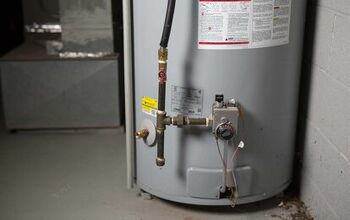Water Level In Toilet Bowl Keeps Dropping (Fix It Now!)

A toilet is the most important plumbing fixture in your home, but that doesn’t mean that they always work perfectly. Everything from the flush power to the water level can tell you that something is wrong with your toilet. So, what does it mean when the water level in your toilet bowl keeps dropping?
If the water level in the toilet bowl keeps dropping there could be a faulty fill tube, ball float, clogged air vent, or issue with the flapper valve. The water level in the toilet bowl can also drop because of loose flange bolts or cracks in the toilet bowl. Remove debris from the air vent if there is a blockage that limits your toilet’s airflow.
Always make sure to turn off the water supply before you troubleshoot your toilet. Follow along as we explore the steps that you need to take when your toilet water level keeps dropping.
Do You Need to Hire a Plumber?
Get free, zero-commitment quotes from pro contractors near you.

Water in Toilet Bowl Keeps Dropping
It can be difficult to diagnose problems with your toilet if you don’t have the plumbing experience. Familiarize yourself with certain components in your toilet, such as the fill tube, flush valve, and ball float so that you can easily diagnose the problem. Any of these parts of your toilet may be responsible if the water level in your toilet bowl keeps dropping. Let’s take a look at the most common causes and solutions when the water in your toilet bowl keeps dropping.
1. Fill Tube
The fill tube is a plastic hose that helps control the water level in your toilet. Your toilet’s fill tube refills your bowl with water each time that you flush the toilet. Healthy toilets can drain the bowl and then refill it with clean water after each flush.
However, your water won’t drain or refill properly if the fill tube is damaged. You can find the fill tube beside other important parts, such as the ball float, inside of your toilet’s tank. Sometimes, damaged fill tubes cause the toilet to leak water over time, and the water in the bowl will continually drop.
Solution
You can’t repair a fill valve if it’s damaged, unfortunately, and all that you can do is replace it. Turn off the water supply to your toilet so that you can work without making a mess. Flush the toilet several times to drain the tank and remove excess water in the tank with a sponge or rag.
Locate the circular ball float inside of the tank and carefully pull it out of the tank. Use an adjustable pair of pliers to pull the plastic nut in the center of the bottom of the tank. Now, identify the fill tube near the supply line and remove it from the tank.
Put the new fill tube in its place and tighten the valve nut so that it stays in place. Place the plastic nut back in the center of the tank at the bottom and tighten it. Put the ball float back in the tank, turn the water supply back on, and flush the toilet to see if it worked.
2. Ball Float
The ball float does more than just adjust how much water is in your toilet’s tank. Ball floats affect everything from the tank water level to the flush valve, and both are important. The flush valve is what makes your toilet flush, and in turn, drain and refill with water.
It is common for ball floats to come loose or take on the damage that prevents proper drainage. Additionally, toilets will continually drain if there is a problem with the float and flush valve. If your toilet bowl recedes after flushing or the water level keeps dropping when you don’t use it, it may be due to a damaged ball float.
Solution
First, carefully lift the lid off of your toilet tank so you can access the ball float. Look for the ball float beside the fill valve in the center of the tank. Ball floats are hard to miss because they are shaped exactly like a small ball.
The ball float rests beside rods that you can use to adjust their height, and ultimately, the water level. You can maneuver the rod by adjusting the screw that is on it. The screw is loose enough that you can use your fingers to loosen or tighten it to raise or lower the ball float.
Most toilet tanks feature lines that designate the appropriate water level for proper operation. Adjust the screw to raise the ball float until the water gradually reaches the line. Put the cover back on the toilet tank and flush the toilet to see if the water level keeps dropping.
3. Cracks
It is easy to crack toilets if you’ve had one for long enough, and that is a death sentence for them. Toilets can crack at the top, tank, bowl, or even base and affect the water flow. You can identify cracks in a toilet visually when you inspect it for damage.
The best-case scenario is that you crack the top of your tank because that doesn’t affect the water. However, cracking the bowl or base of the toilet can lead to serious problems and water damage. It can be hard to identify cracks and damage if they’re within the toilet drain.
Toilet water that drops can signify potential damage within the drain or bowl. Cracks inside of the tank can also result in receding and plummeting water levels in any toilet. Whether your toilet’s water level simply drops or water leaks, a cracked toilet is a terrible sign.
Solution
The only solution is to replace your cracked or damaged toilet to avoid water damage. Even if it is only dropping water right now, it could still pose a risk of flooding and damage. Toilets start at around $200, and it’s worth the cost compared to fixing extensive water damage in your bathroom.
Always treat your toilet well and avoid putting too much weight on it to protect it. Excess weight, dropped items, and other damage can create cracks that leak water within the plumbing, or onto your bathroom floor. Buy a new toilet if it is cracked to the point that the water level drops even if you aren’t using it.
4. Loose Bolts
Believe it or not, even loose bolts can cause your toilet’s water level to drop over time. That is because loose bolts put stress on the wax rings that create a seal and weakens them over time. It is common for toilet bolts to come loose, especially if the toilet is old and has been used a lot.
The stress of the shifting bolts can damage the wax ring and seal and affect the water. This causes the bowl to fill with less water than it needs, and it can also cause the water level to drop. There is a fine line between loose toilet bolts and bolts that are put in too tight.
Solution
This is one of the easiest solutions because you can tighten toilet bolts with your hand. You may have to pry the cover off of the bolts with a flathead screwdriver, but that isn’t always necessary. Next, simply use your fingers to tighten the bolts to the point that they are firmly in place.
Avoid tightening them too much or you run the risk of getting them stuck. This can make it harder to remove the toilet if and when you remove the toilet to replace it with another one.
5. Flapper Valve
A flapper valve is only as strong as the seal that holds it in place within the tank. The flapper valve directly connects to the flush lever and has a chain that goes between them. Sometimes, the seal around the flapper valve weakens and will force the toilet water level to drop.
It is useful to turn off the water supply before this fix unless you don’t mind getting your hands wet. Shut off the water supply, mop up the remaining water that’s stuck in the tank, and purchase a flush valve seal.
Solution
Remove the tank lid and unhook the chain from the flapper valve to begin. Look at the base of the overflow tube and identify the flush valve seal. The flapper valve is likely the cause of your water level dropping if it looks worn out and damaged.
Pull the damaged flush valve seal out of the tank with your fingers to remove it. Don’t worry about damaging it because you cannot repair a flush valve seal, you can only replace it. Simply put the new flush valve seal in place of the old one and press it down firmly to make it stay in place.
Turn the water supply back on and reconnect the chain to the chain to the flapper valve. Put the lid back on the tank and flush the toilet several times to see if this fix worked for you.
6. Clogged Air Vent
If the pipe that vents the plumbing to the outside is clogged with debris, your system can choke, and pull water out of the toilet bowl. This will affect the flush power and the problem can grow worse over time.
Solution
Typically the vent pipe is a small gray pipe coming out of the roof. Check to see if it has debris or anything else blocking it. If so, remove the blockage to see if that solves the problem.
Do You Need to Hire a Plumber?
Get free, zero-commitment quotes from pro contractors near you.

Troubleshooting
Run through the following checklist when the water level in your toilet bowl keeps dropping.
- Check the internal component for any damage. If all looks okay, proceed.
- Make sure the toilet is full and then run your sink and tub faucets.
- If you hear gurgling, the drains are drawing air through the toilet, and the vent is likely to blame.
- Next, turn off the faucets and refill the toilet. Wait for about an hour then check the water level.
- If the water level is lower with no other drains running, there is likely a crack in the bowl.
Summing It Up
You need to remove the lid from your toilet tank and examine the fill tube, flush valve, and ball float. Raise your ball float and turn the screw on it to raise it to increase the water level in the bowl. This will also cause your toilet to drain properly and retain healthy water levels throughout the day.
Replace the fill tube if it is damaged or broken because it isn’t always possible to repair. Remove the valve nut, pull the damaged fill tube out of the tank, and insert the new fill tube to fix this problem. Inspect your toilet for cracks to see if it is slowly leaking water from any part, but it can be difficult to tell.
Toilets can leak from within the drain, and you won’t be able to identify that problem if that is the case. You can also inspect the flapper valve and replace its wax ring to let the water drain properly.
Related Guides

Nick Durante is a professional writer with a primary focus on home improvement. When he is not writing about home improvement or taking on projects around the house, he likes to read and create art. He is always looking towards the newest trends in home improvement.
More by Nick Durante



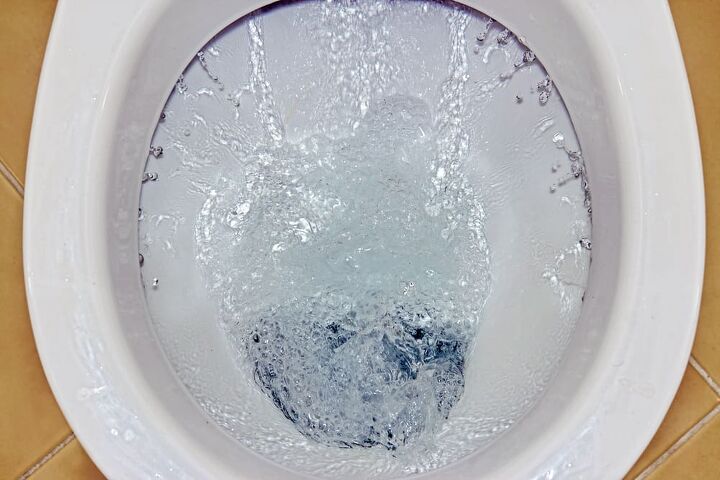











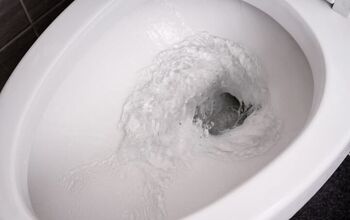
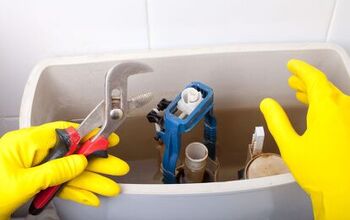






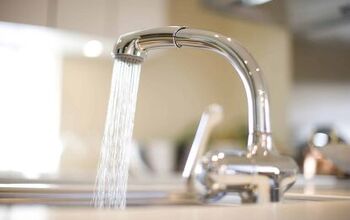
![10 Most Dangerous Neighborhoods in Baltimore [Updated]](https://cdn-fastly.upgradedhome.com/media/2023/07/31/9075655/10-most-dangerous-neighborhoods-in-baltimore-updated.jpg?size=350x220)


